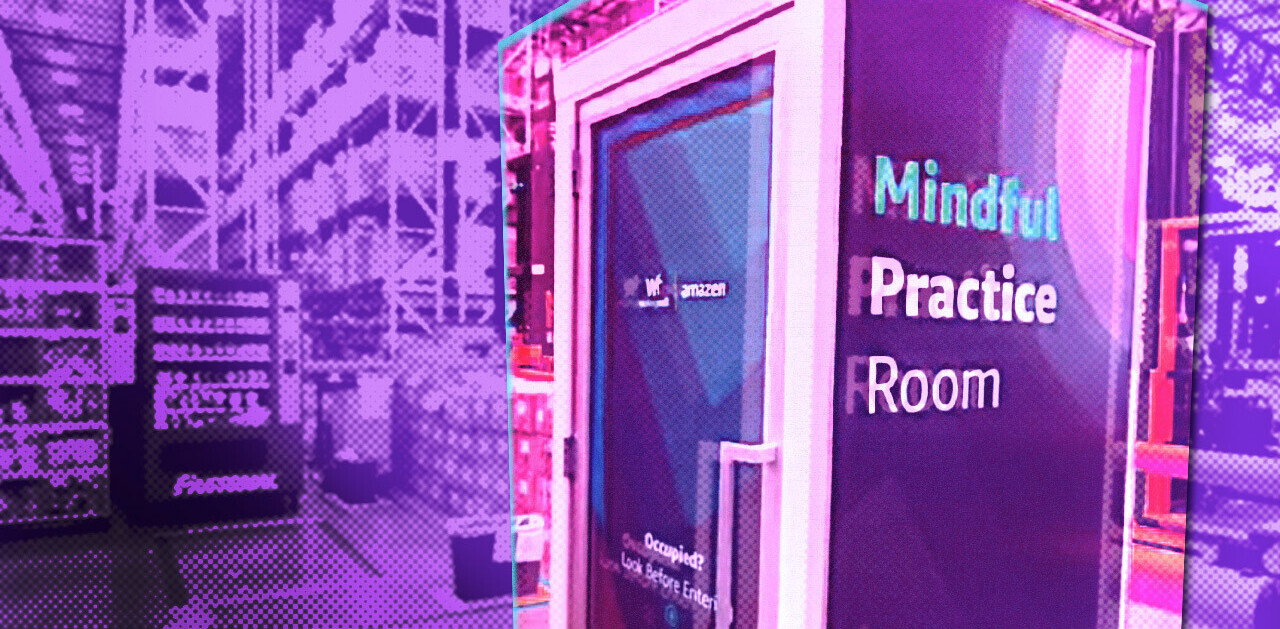
Let’s be honest: pre-pandemic, working from home was a dream. After COVID-19 forced almost everyone to work remotely, we’ve discovered the new virtual workplace encompasses more than Zoom calls, virtual coffees, and cat memes in Slack.
Tech companies did not exactly embrace working from home before the worldwide lockdown, despite studies showing working from home increases employee productivity. Skilled remote workers are also happier employees that are 9% more engaged and 50% less likely to quit their job.
The crisis disproved the perception that working from home was counterproductive. By mid-May, Twitter CEO Jack Dorsey emailed his employees that the entire workforce was allowed to permanently work from home – Slack followed suit in June. Google, Amazon, Facebook, and Microsoft recommended their employees work remotely until October or for the remainder of the year.
Work-life balance, mental health, and diversity and inclusion were already important subjects pre-COVID — and those problems have certainly not gone away now that our offices are virtual.
The sudden shift to an online work culture has highlighted the glaring issues companies have when it comes to a company-wide fair work environment — but it also presents an opportunity where all team members can reflect on their contributions to a toxic work culture, and grab the chance to do better.
Virtual workplace practices need to stimulate productivity while also upholding a culture of inclusivity where every employee is treated like a valued member of the team.
But how do companies create an inclusive virtual work community?
These blurred lines: balancing home and work-life
The migration to the virtual workplace created challenges for employees trying to manage their work-life balance during the workday. It’s not that strange because the workplace is now the same environment where we eat, sleep, and nestle on the couch for a Netflix-binge.
A recent survey by Monster revealed that roughly 50% of respondents who were working from home felt burned out. And 52% of respondents didn’t have plans to take any time off. Furthermore, business closures ensured limited opportunities to relieve Zoom fatigue with a spinning class or to eat that suffocating ‘work never ends’ feeling away at your local Italian.
Is anyone getting it right? It takes reprioritization and clear communication to bring everyone together and to ensure that employees’ personal needs are met, so they don’t get swallowed up by their workload, and keep a healthy work routine.
Though it turns out companies with a balanced work culture experienced a less drastic shift during their digital transformation.
Mike Blackman, Managing Director of Integrated System Events, the world’s largest AV and systems integration show, said that his staff of around 30 people – spread out between the main offices in Amsterdam, Munich, and Barcelona with home offices in the UK, Spain, and Germany – adapted quickly to the new reality. “We are very used to remote working. Video calling is the prime means of communication within the organization, and we have a full team call every week. When the crisis hit, everyone took their laptops home, and we carried on working in much the same way as before.”
Other companies upped their company-wide communication and actively changed their workplace practices to keep a healthy work-life balance in the new normal. Sonita Uijt de Haag, Director of People at scoutbee, a digital procurement platform, said the company — with a staff of 132 employees — “shared resource documents on remote work, then later built out a library that included articles for remote work as general management advice.”
To build an inclusive virtual work culture Uijt de Haag and her team “used surveys and round tables to crowdsource which activities the People team can facilitate to help people feel included. General changes included frequent casual coffees led by team leads, bi-weekly all-hands, and bi-weekly company events.”
Out of sight, out of mind?
Online work put a damper on the casual daily interactions between colleagues. While small talk might seem counterproductive to work, it does a lot for chemistry and collaboration within a team.
Additionally, the same pitfalls of the modern IRL workplace have followed us to the virtual workplace: from office-related tribalism to loneliness. Tech journalist Clive Thompson wrote in The New York Times that “isolation has been a chief complaint that arises in all research on remote work.”
Akilah Cadet, founder of the DEI consulting firm Change Cadet, told TNW that companies should build a virtual culture that offers “opportunities to have dialogues and conversations between employees, because FOMO is very real in a remote working environment.”
A 2019 study from EY’s Center for Talent Innovation revealed that “39% of respondents feel the greatest sense of belonging when their colleagues check in with them about how they are doing, both personally and professionally.”
In the virtual workplace, community spirit can be nurtured by regular interaction and collaboration between employees to create better social bonds. From daily chats and remote running clubs to virtual coffee breaks and Zoom happy hours.
Companies should focus on community within the new virtual culture by taking employee experience into account.
“All of our projects are organized to help people to feel seen, have ownership, be supported, feel connected, believe they can grow, and that they feel heard,” Uijt de Haag explained on the practices of her HR department. “This is why most of our larger projects, include employee input company-wide from all levels, to ensure people are treated the way they want to be treated, not the way we think they want to be treated.”
DEI in the virtual workplace
Everyone has blind spots and different experiences that influence how we work, react, and interpret the world around us. “If the workplace is already toxic, it will continue to be toxic in a virtual setting, if not amplified,” said Cadet.
It’s hard enough speaking up and voicing dissenting ideas in the workplace — these conversations can get even harder over a Zoom call.
Diversity, Equity, and Inclusion (DEI) policies can be helpful to offer a framework of the company’s values, making clear what’s expected from all employees within the workplace — and should be updated to make sure they suit the virtual office too.
Inclusive virtual policies and procedures — from online etiquette during Zoom meetings and performance evaluations to feedback talks — can boost the sense of belonging within the company. DEI guidelines can ensure that all employees are evaluated on objective criteria.
Without such guidelines, employees from underrepresented backgrounds – when it comes to gender, sexual orientation, ethnicity, race, disability, or age – could be treated less fairly, explained Nakeema Stefflbauer, Senior Product Integrity Program Manager at insurance firm ERGO Digital IT and CEO of tech nonprofit FrauenLoop.
“A culture of inclusion doesn’t mean tokenism,” explained Stefflbauer. “It doesn’t mean hire one Black or POC person and let them sink or swim.”
According to Stefflbauer, it means that companies should “adopt policies that ensure active listening on calls, even when a soft-spoken or a junior person is speaking; it means ensuring equal ‘admin’ work at meetings (who is always taking notes?); looking at the ‘stretch’ or growth projects and travel assignments and who gets to do them vs who doesn’t.”
But companies can also conduct pay equity surveys, Stefflbauer suggests, and “ensure that no one gets penalized for not demanding the highest salary; publishing pay ranges, for instance, so that a salary survey won’t reveal massive gaps by gender, race, age, or any other factor for employees who perform the same work.”
When you want to build a thriving and inclusive virtual workplace
COVID-19 has proven that tech companies can drastically adapt their work culture in a short timeframe, so it’s a great time to use this opportunity to also look at noninclusive workplace practices.
Not sure where to start? Here are a few things companies can do now to ensure their work culture is an inclusive one, and remains so post-lockdown.
1. Ensure clear and efficient communication
A focus on flexible yet efficient communication can prevent muddled messaging, missed deadlines, and decreased productivity. Zoom, Slack, Teams, Trello, Asana, and InVision are communication tools that can contribute to an inclusive virtual culture with a smooth flow of information.
But using these tools without creating new communication guidelines can overlook the introverted employee. Introverts who may feel uncomfortable speaking up in IRL and Zoom meetings may be able to communicate better in a virtual chat capacity, said Cadet. “Now with meetings in a virtual capacity you can put your message in the chat. There’s more room for conversation, and people are more open to creating dialogue whether through Slack or mail.”
Perhaps your company used to rely on daily all-hands meetings, where everyone gave an update. This traditional meeting structure may not be effective any longer and could be contributing to exclusionary workplace practice without even realizing it. Cutting daily meetings can allow room for employees to self-evaluate, recognize their own strengths and weaknesses, and use the uninterrupted time to get their job done.
2. Practice intentional inclusion with measurable goals
Diversity and inclusion should be one of the core values of the company – and not a catchphrase.
In an op-ed for the Huffington Post, Patricia Fili-Krushel, CEO at the Center for Talent Innovation wrote that companies need to “develop an actionable, measurable plan” to fulfil their diversity efforts.
Active inclusion benefits everyone. It’s a practical motive, Sarah Joyce, Chief Global Officer of the AV trade association AVIXA, explained to TNW. Homogeneity and groupthink in the workplace is counterproductive because “studies show that more diverse organizations perform better financially and the good news is that technology is a great enabler by increasing ROI, lending itself to more innovative ideas and fostering a more productive work environment.”
Joyce champions apprenticeships and professional qualifications to continue to foster diversity and inclusion within the AV industry.
Companies that are still able to hire have the perfect opportunity to prevent homogeneity In the virtual workplace. Remote work is location independent which means that your hiring pool is vast, and that people with disabilities, mobility issues, or child-rearing responsibilities are now operating on an equal level playing field.
At Frauenloop, Stefflbauer connects minority women to the tech industry. Her nonprofit “relies on tech companies to understand that they have to invest in juniors to reap the benefits of extended tenure and mentorship experience among the senior staff,” Stefflbauer explained.
“Companies that realize how much more value they get by hiring and supporting, say, a junior developer who might not look or sound like the majority of the team, are the ones who avoid being stuck endlessly screening and hiring ‘tech ninjas’ – who will generally drop them for a bigger paycheck in three months.”
“Inclusion really does advertise itself,” adds Stefflbauer. If a company has minority employees that visibly thrive in the workplace, it will be easier to hire diverse voices.
After all, diversity doesn’t stick without inclusion.
3. Clear accountability within the organization
In a remote team, every member should have defined roles, individual goals, and responsibilities so that they can balance their workload and prioritize tasks.
Creating an accountability buddies program is an easy way to implement informal mentorship, foster communication, and encourage realistic goal-setting — all things that are incredibly important in an inclusive workplace. Employees can challenge each other, set goals, and check-in to make sure their deadlines are manageable.
4. Safeguard mental health and emotional wellbeing
In 2019, Vice reported on how the workplace could be a minefield for neurodivergent individuals – people who struggle with ADHD, anxiety, depression, or PTSD – and why these employees could mentally benefit from working remotely. While the pandemic has increased stress levels for many, it offers a new opportunity for companies to readdress how they’ve discussed employee mental health. Research shows that when mental health in the workplace is acknowledged it leads to better performances, engagement, and wellbeing of employees.
What does ‘acknowledgement’ look like from a practical standpoint? This could include anonymous counseling services with third parties, separate slack channels where employees can vent frustrations, and support groups for working parents, women, BIPOC, and LGBTQIA employees. It fosters connections within the workplace and reduces the isolation of remote work.
While the pandemic is stressful enough, global protests for racial equality can be an additional layer of stress for Black and POC employees.
While several tech companies showed support on social media, Cadet explains that creating a diverse and inclusive workplace takes a lot more than performative allyship. “The same message and funding you’re providing to the external Black community has to be equal, if not more, for the internal community, aka Black employees. If not, you’re holding on to the values of white supremacy.”
Cadet underlined the importance of inclusive policies in the virtual workplace to guarantee psychological safety for Black employees. Guidelines should also be inclusive on how meetings are being conducted. Some employees may now want to only connect via chat rather than video call, have the opportunity to share their experiences, or receive specific support.
While it’s certainly difficult to reflect as a company on lack of diversity and inclusivity, a good place to start is by telling BIPOC employees: ‘We support you.” Being open, non-defensive, and even offering extra time off for mental health are incredibly important first steps. Companies should have regular check-ins with their Black employees, acknowledge the current unrest, and prioritize providing them resources.
The post-pandemic workplace
In 2019, the U.S. Bureau of Labor Statistics estimated that by 2028, 73% of all teams will have remote workers. They couldn’t have foreseen the unraveling of the world in the first half of 2020.
The crisis accelerated the digital transformation of the workplace, and rapidly expanded the idea of what a workplace can be. Going digital can either help solve a company’s inclusion issues, or make them worse.
After all, office-related tribalism and other toxic work culture elements can fester and influence the environment of the virtual workplace. So it’s incredibly important companies start incorporating better workplace practices that embrace diversity, equity, and inclusion now.
Remote work will likely become commonplace after the pandemic, and offices will probably never return to the way they were.
The long-term benefits of remote work remain to be seen, and while we can’t predict the future, we can start to work towards a better, more inclusive one now.
Get the TNW newsletter
Get the most important tech news in your inbox each week.





